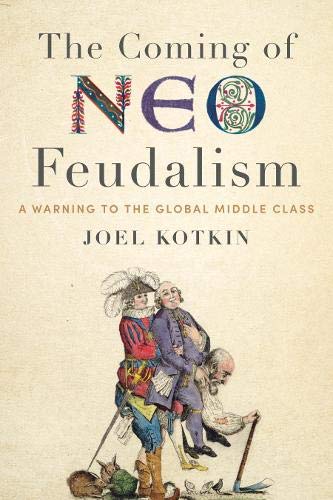Canada has released early results of the 2021 Census, with a detailed analysis of growth in Census Metropolitan Areas (CMAs). Among the 41 metropolitan areas, 77% of the population growth between the 2016 and 2021 censuses was in the suburbs, with 23% in the urban core (Figure 1). The suburbs have 78.5% of the total CMA population, with 21.5% in the urban core (Figure 2) read more »
Demographics
Are We Really Among the Wealthiest People on the Planet?
There are lots of ways of measuring how New Zealand is doing, and none of them is perfect.
We stack up very well on measures like life expectancy, unemployment, infant mortality, and car ownership. read more »
- Login to post comments
A New Dawn for the Working Class?
The labouring masses are restless, as evidenced by the Canadian trucker strike, union drives in Amazon warehouses in the US and in demonstrations throughout the developing world. More revealing still may be the turmoil in the labour markets, where workers are changing jobs, creating their own and, overall, refusing to return to the structures of the pre-pandemic order. read more »
- Login to post comments
Is Suburbia’s Global Benchmark Share of Urban Jobs 87%?
“The great enemy of truth is very often not the lie--deliberate, contrived and dishonest--but the myth--persistent, persuasive, and unrealistic. Too often we hold fast to the cliches of our forebears. We subject all facts to a prefabricated set of interpretations. We enjoy the comfort of opinion without the discomfort of thought.” read more »
Metro Costs of Living and Domestic Migration: 2010-2020
As the recently ended decade evolved, migration from more costly US metropolitan areas to those with lower costs increased. This developing dispersion is indicated in net domestic migration among the nation’s 384 metropolitan areas from 2010 to 2020. This article categorizes the 384 metropolitan areas by Bureau of Economic Analysis 2020 Regional Price Parities (cost of living), and their net domestic migration. read more »
- Login to post comments
Nashville: The Evolving Urban Form
Nashville’s has long been known as “Music City,” a title that dates nearly a century to 1925 when the first “Grand Ole Opry” performance was held in the Ryman Auditorium (above). For even longer, Nashville has been the capital of Tennessee, with the 10th oldest state capitol building in the nation (below). But the big story increasingly has been the area’s rapid growth read more »
The Next American Cities, a New Report from Urban Reform Insitute
The urban form has shifted throughout history. This has been critical to its success. Today we are on the cusp of another transition, ushered in by new technologies and changing demographics, and accelerated by a devastating pandemic. Although these forces affect all geographies, the best chance of success and growth lies in what we define as The Next American City. read more »
- Login to post comments
Trouble in Paradise: The Crumbling California Model
Some horrified conservatives dismiss California as the progressive dystopia, bound for bankruptcy and, let’s hope, growing irrelevance. read more »
- Login to post comments
Here's Why California is Losing Population for the First Time
California is suffering a major demographic reversal, one that threatens both the state’s economic future and the durability of its progressive model. read more »
- Login to post comments
The Left Doesn't Own Minority Voters
Demographic transitions present political opportunities, but do not protect politicians from their own folly. The shift in most Western countries to a more racially and ethnically diverse demographic has been widely seen by left-wingers as an opportunity to cement their ascendancy. read more »
- Login to post comments






















